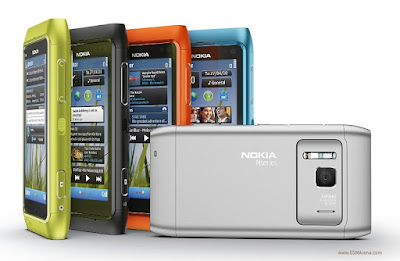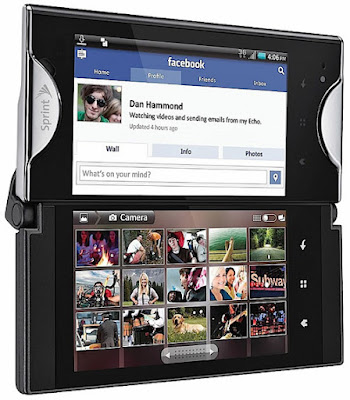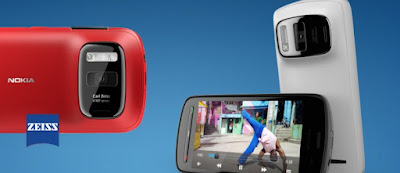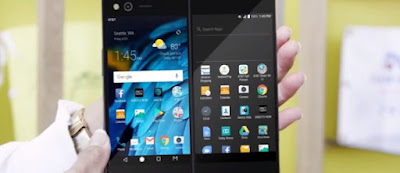Welcome to a two-part #ADecadeFlashback special feature about mobile phones from the 2010s. This will be the second and final part of the feature and it's all about unusual smartphones with out-of-this-world ideas and innovations.
 |
| Photo by Gabriel Freytez from Pexels |
If you missed the first part of the #ADecadeFlashback special, I briefly talked about smartphones that I currently own and also the one on my wishlist or, in other words, the one I will definitely own someday. If you delve deep into the history books, you realize that smartphone brands can occasionally go mental. They always try to break free from the usual boring norm and do something unconventional that would keep the tech press talking and show others that they are not some amateur brand who just want to fill the accountants' spreadsheets with the same boring looking product all the time.
With that in mind, let's jump in right away and list down my personal favourite crazy smartphones.
With that in mind, let's jump in right away and list down my personal favourite crazy smartphones.
Nokia went nuts with the camera!
"Nokia" and "smartphone camera technology" is like "America" and "muscle car" - they are so synonymous with one another. Ask most people about Nokia, and the first thing immediately springs to mind is their outstanding camera tech. When the N8 and the 808 PureView were launched, it showcased Nokia to the whole world as an absolute innovation thinker. |
| Photo: GSMArena |
Let's start with the N8. It runs on Symbian^3 OS out-of-the-box and features a 3.5" AMOLED screen, 16GB internal storage with microSD card slot expansion, and a 1200 mAh battery. Decent spec alright, but the main headline is the camera. It features - are you sitting down for this? - a 12MP 1/1.83" sensor with a native 1.75µm pixel size. Yes, a 1/1.83" sensor and 1.75 microns of pixel... IN 2010! To put those numbers into perspective, Sony's 48MP Quad Bayer sensor launched in 2018 only has a 1/2.0" sensor and a native 0.8µm pixel. Accompany the camera is a Xenon flash and dedicated camera shutter button.
After the N8, comes the 808 PureView with a native 41MP 1/1.2" sensor and 1.4µm pixel. This was the very first Nokia smartphone with a 'PureView' trademark, which is Nokia's idea of creating an image output that would rival a four-figure DSLR camera. To achieve such a remarkable feat, Nokia went mental with oversampling. Briefly speaking, it's a pixel binning technique using a traditional RGB colour array where seven pixels of an image with super large resolution combined to create one superfine detailed photo at a low resolution and in low-light situations. Explaining the whole technology behind this bizarre smartphone camera would take up more than half of this page, so you can go ahead and read the whitepaper of it here.
Such a bewitching idea from the imaging department is the reason why people are still pitting the N8 and the 808 against newer smartphones with more emphasis on the camera's software algorithm.
The last ever flagship-grade BB10 device before BlackBerry went Android.
Let me open up to a little secret: despite my utmost interest in smartphones, I have never experienced BlackBerry's mobile OS. I do read and watch about it, but it never occurred to me that I really should own one. Partly because I only found out about BlackBerry 10 (BB10) some two years ago.
Anyhow, my discovery of another mobile OS that isn't Android or iOS led me to the Passport. It was launched in 2014, and just look at it! Every single smartphone launched at the time, including Windows Phone devices, look pretty much the same - they are all just the same plain soap bar design, but only taller. Not this one, though.
With an unconventional 4.5" 1:1 (read: square) 1440p screen alongside a three-row QWERTY keyboard, this particular BlackBerry smartphone really stands out from the crowd. What's more, BlackBerry slapped in a flagship-grade chipset in the shape of Qualcomm's Snapdragon 801 with 3GB RAM and 32GB internal storage with microSD card slot expansion. Really, this is a worthy flagship-grade alternative for people who want to experience something that isn't Android or iOS. And let's not forget that one area where BlackBerry really shines: Security. Remember that case of Sony Pictures got hacked before?
The only smartphone with a 1-inch camera sensor to date.
I may have mentioned Nokia and their superior smartphone camera technology earlier, but did you know that there was a hidden contender from the land of the rising sun that could give Nokia's PureView technology a run for its money?
 |
| Photo: GSMArena |
Having said that, the CM1's 1" camera sensor is not the only reason why this smartphone is outright outrageous despite lacking a Xenon flash and onboard OIS. Here's a video to show you another reason why the CM1 is on my list. And no, your eyes are not fooling you - this is for real! Try to find smartphones of today that can do this trick.
Two is better than one.
2019 would be remembered as the start of the foldable screen smartphone race with Royale FlexPai started the ball rolling in the first place followed by Samsung Galaxy Fold and later Huawei Mate X. It all sounds futuristic, but what if you are the kind of person who is not buying into the whole foldable screen race while at the same time wanting to have the same kind of flexibility as the aforementioned devices from a soap bar smartphone? That is where Kyocera, NEC, and ZTE step into action. During these days, a screen that can be folded in half is just a mere tech geeks' fantasy. What they did instead is simply combine another secondary screen to create a dual-screen smartphone.
 |
| Photo: GSMArena |
The first to initiate the idea was Kyocera with the Echo back in 2011. It has two 3.5" WVGA screen that was connected via a clever hinge that allows the top screen to slide out horizontally. The Echo can be used in three modes - 'Simul-Task' for using two different apps at one time, 'Optimized' where an app would complement both screens (e.g. email on one screen with the touch keyboard on another screen), and 'Tablet' where both screens act as a single 4.7" tablet screen. While it was an ingenious solution, there was one big obstacle in the way: It was only available for the USA market via Sprint.
Fast forward to 2013, and a Japanese electronics company decided to give a go on the dual-screen smartphone idea. Enter NEC's Medias W. Like the Echo, it has two screens albeit a larger 4.3" qHD screen and both screens can be used either to run two different apps together at one time or act as a single tablet screen. What is different from the Echo is the hinge - NEC opted for a hinge that allows the secondary screen to be flipped behind the phone. It means that you can easily hide the other screen at the back for normal single-screen smartphone use. What's more, the 8MP camera can be rotated to allow seamless casual mobile and selfie photography.
NEC's much simpler hinge approach prompted the Chinese smartphone brand ZTE to release a flagship-grade dual-screen device in 2017. Called the Axon M, it was powered by Qualcomm's Snapdragon 821 chipset with 4GB of RAM onboard. More than that, it has a decent 20MP camera that can be switched between each screen with a tap or a flip. Should you find the 64GB internal storage wasn't enough, you can slot in a microSD card for bigger storage.
With such a huge leap of hardware upgrade and the maturity of Android OS considering that this phone was launched with 7.1.2 Nougat out-of-the-box, you are in for a world of limitless creativity - two-page Google Play Books reading, Nintendo DS or 3DS emulator gaming, Office suite productivity, mobile DJ mixing, the lot. Frankly, you cannot do better if you want to turn other peoples' heads by doing some proper dual-screen multitasking with the Axon M.
With such a huge leap of hardware upgrade and the maturity of Android OS considering that this phone was launched with 7.1.2 Nougat out-of-the-box, you are in for a world of limitless creativity - two-page Google Play Books reading, Nintendo DS or 3DS emulator gaming, Office suite productivity, mobile DJ mixing, the lot. Frankly, you cannot do better if you want to turn other peoples' heads by doing some proper dual-screen multitasking with the Axon M.
The design icon is back with a modern twist.
While everyone was talking about Samsung Galaxy Fold and Huawei Mate X with a screen that can horizontally fold into half, Motorola is also making a foldable screen smartphone of their own. But instead of following Samsung and Huawei's solution, Motorola went for a completely different route.
Instead of being folded horizontally, Motorola's 2019 revival of a design icon from the early Y2K folds vertically. This is a great solution for people who want a smartphone with a foldable screen but didn't want the same usual oversized smartphone height when folded. Motorola's foldable flip phone suddenly make the Galaxy Fold and the Mate X look gigantic. The design and technology going through to create this remarkable smartphone are simply amazing, as shown in the video below.
Being a modern-day revival means modern-day components and the RAZR 2019 is no exception. The big chin at the bottom serves as a fingerprint scanner. The smartphone possesses two AMOLED screens with one 2.7" 600x800 screen on the outside and a 6.2" 21:9 HD+ screen on the inside. It runs on Snapdragon 710 chipset with Android 9.0 Pie out-of-the-box and is powered by a 2150 mAh battery. As for the camera, you have a 5MP selfie camera and a 16MP primary rear camera coupled with a 3D ToF sensor. The price tag of US$1,500 may sound expensive considering the spec it delivers, but it is noticeably cheaper than the US$1,950 Galaxy Fold and the US$2,250 Mate X.
#P2P
If you like this article and want to support my work, do me a favour by supporting me at Ko-fi. Your support is deeply appreciated and will serve as a motivation for me to keep this blog growing bigger and better in the future.
If you like this article and want to support my work, do me a favour by supporting me at Ko-fi. Your support is deeply appreciated and will serve as a motivation for me to keep this blog growing bigger and better in the future.
Click on the banner below to show your support.






Post a Comment
What do you think of this post? Share your thoughts with us.